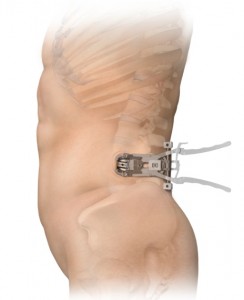What is XLIF?
Spinal conditions that can cause pain and restrict mobility are almost a universal health problem. But each of our back problems is different in its own way. Thankfully, advances in spinal surgery provide new treatment options that allow orthopedic spine surgeons to better tailor treatments to individual patients.
One of these new procedures is eXtreme Lateral Interbody Fusion, or XLIF. XLIF is a spine fusion surgery procedure in which the surgeon accesses the intervertebral disc space approaching from the side (lateral) rather than from the front (anterior) or the back (posterior) of the spine. A form of interbody fusion, XLIF is a category of spinal fusion back surgery in which the affected spinal disc is removed and replaced with an implant containing a bone graft. The bone graft encourages the fusing of the spinal vertabrae through the disc space. XLIF offers a spinal fusion option for treating various types of lumbar spinal disorders including lumbar degenerative disc disease, spondylolisthesis, scoliosis and deformity, and some recurrent lumbar disc herniations and types of lumbar spinal stenosis.
Key Considerations for XLIF
XLIF is one of the advanced, minimally invasive spinal surgery procedures available thanks to microsurgery techniques. XLIF utilizes neruomonitoring, known as electromyography or EMG, which allows the surgeon to test the nerves emanating from the spine in the region during surgery to ensure they are not being harmed or irritated. Nerves emanating from the spinal column lie in close proximity to the muscle around the spinal (the psoas muscle) where the surgery is performed. Ensuring these nerves are not damaged during surgery receives paramount attention. (EMG is also used to confirm nerve compression resulting from a herniated disk or spinal stenosis, by measuring the electrical impulses produced by nerves in response to muscles.) This minimally invasive back surgery ensures minimal tissue damage, minimal blood loss, a far smaller incisions, reduced scars and relatively quick recovery time. Here at New Jersey Spine Specialists, we have performed this procedure with excellent results and find it a valuable addition to our surgical treatment options.







